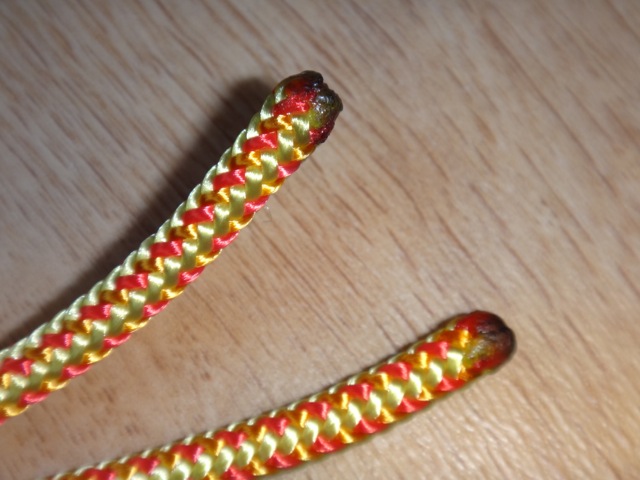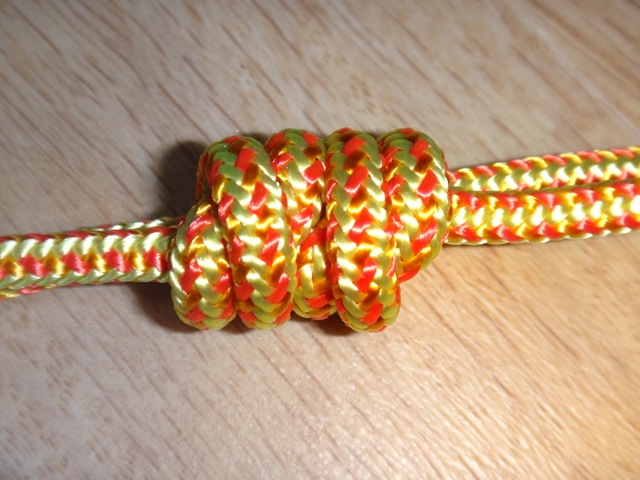A prusik loop is a length of 5 or 6mm cord tied into a loop using a double fisherman’s knot. Prusik loops can be any length but using a length of rope between 120cm and 160cm will give a pretty flexible system.
The knot must be tied with a rope of diameter less than the main rope. So if you are using an 8mm or 9mm throw line you need to be thinking about a prusik loop made fromm 5 or 6mm cord. The closer the cord and main rope are in size the less efficient the system. You also need to balance this against using a cord that is so thin that a. its breaking load is quite low, and b. it could cut through the main rope.
I made a couple of new loops today. Each one takes only a few minutes to put together. The 5mm cord used in the following images is manufactured by Marmot and costs only £0.60 per metre. The first step was to cut the cord to length and then seal the ends using a lighter. I cut my cord to approximately 150cm long.
Step two was to tie the double fishermans making sure that enough of a “tail” is left just incase the cord were to slip. This knot is super simple to tie, check out this animation.
Once one is tied you tie another with the other end of the cord.








For climbing, the general rule always used to be, for prusiks, use cord half as thick as the rope you intent to use them on.
I’m not sure how that translates to flat throwline, but for round rope it should give a good starting point
Mammut do a cord that is (allegedly) woven to give more grip as a prusik. I’m not sure if it’s just marketing spiel, but the weave of the sheath is definitely different, and my 5mm prusiks made from the stuff have been fine on everything from 8.1mm to 11mm climbing rope, and a range of throw lines, without needing to put too many wraps in.
Needle sports do prusiks in this cord for about £1 each.